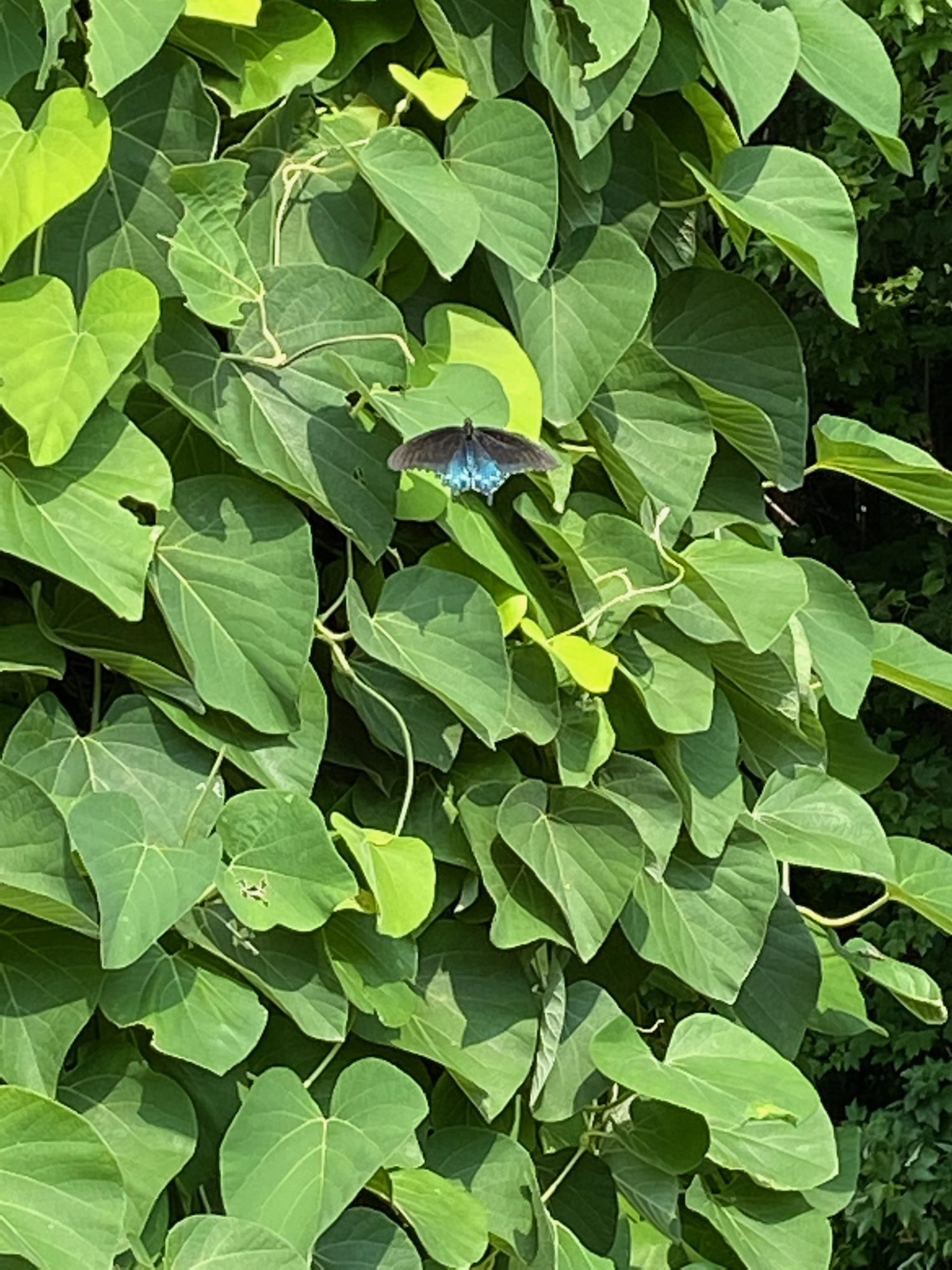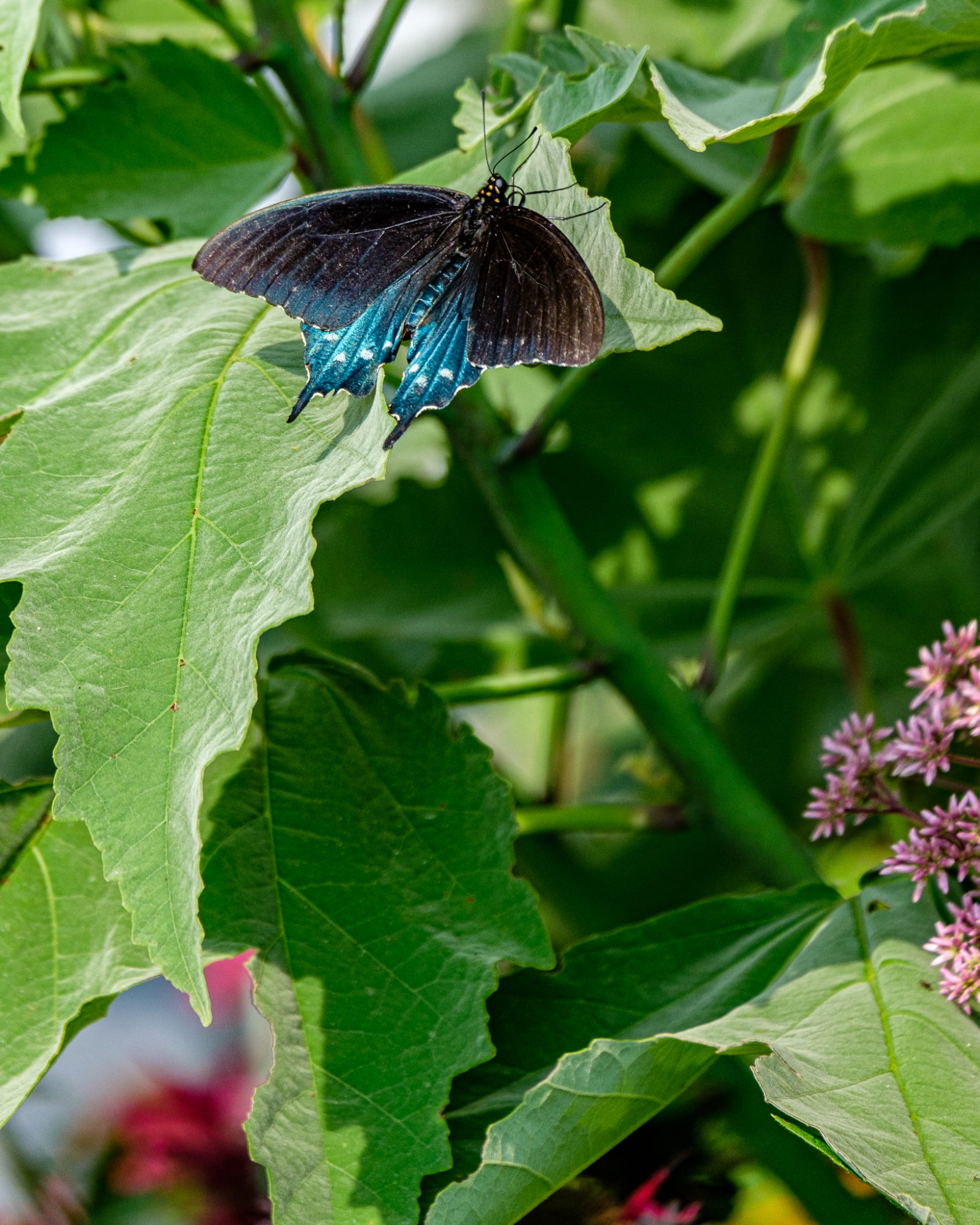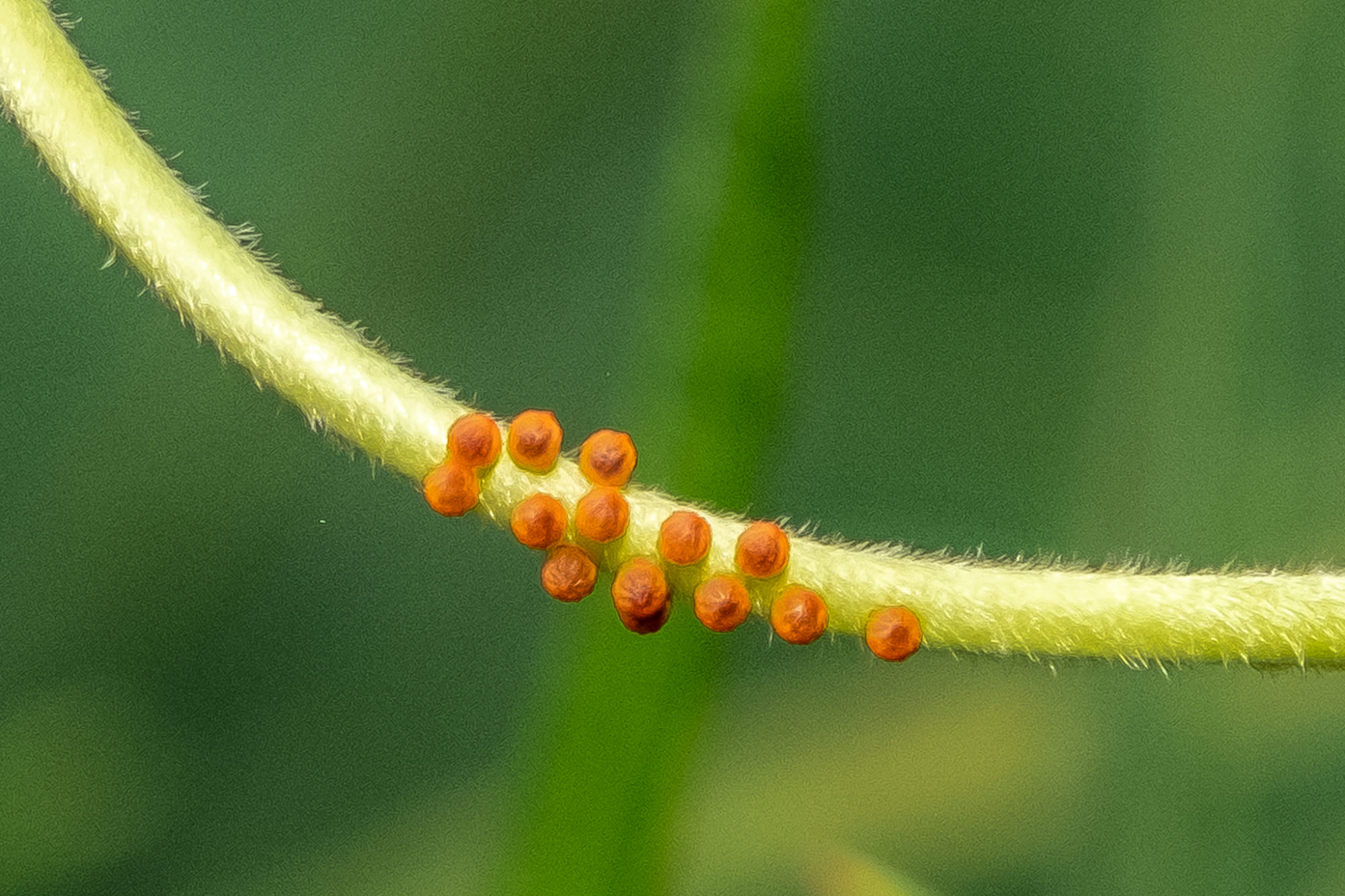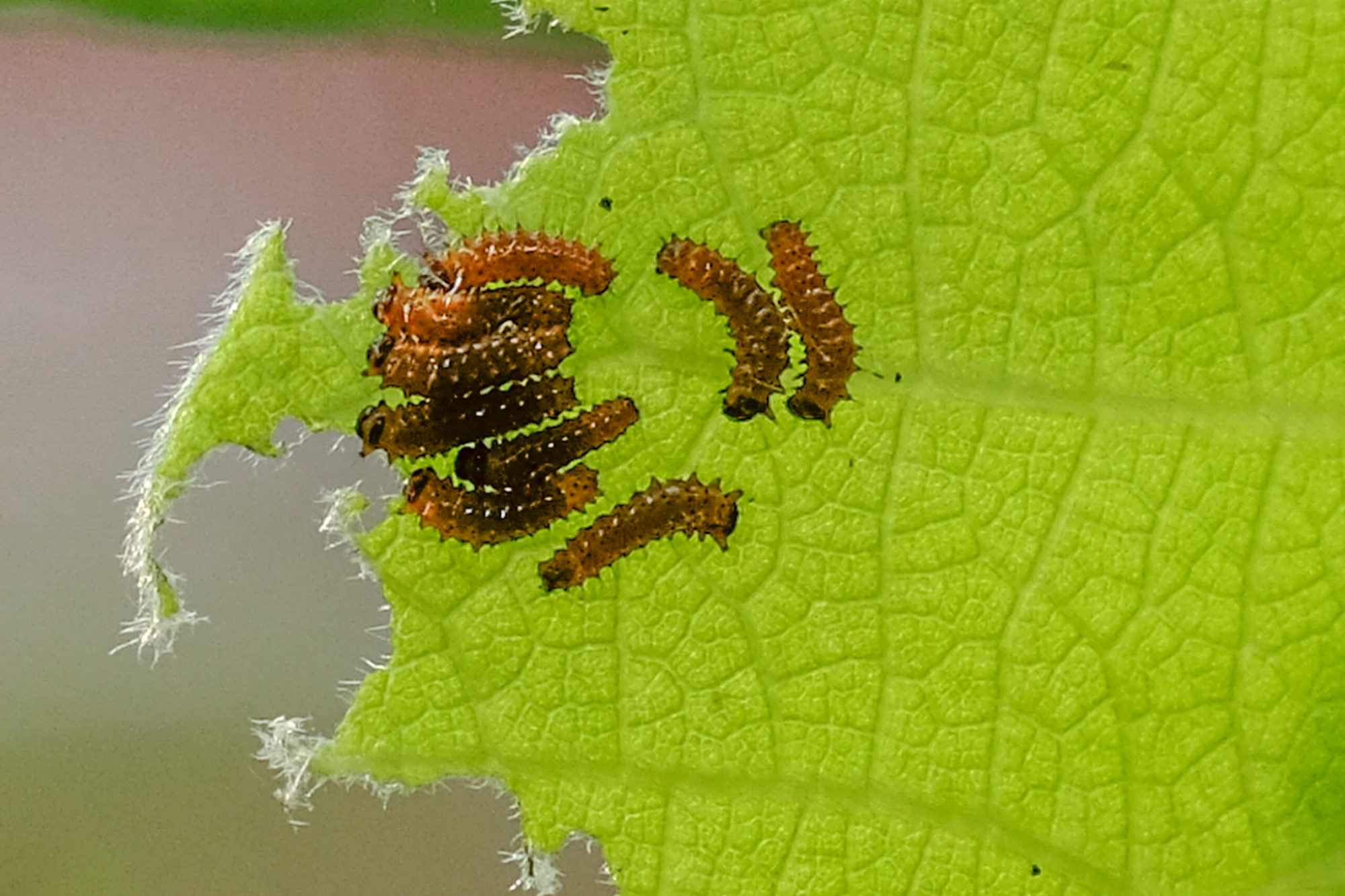By Mary Reid Barrow
A pipevine swallowtail butterfly had an intense interest in the back half of the Children’s Wildlife Habitat at the Virginia Beach Farmers Market recently.
It zipped around, as if in a frenzy, landing on one plant here, one plant there, until it arrived at its namesake and host plant for its young, the pipevine itself.
It continued flying its erratic flight round and round the 12- foot vine. Growing on a teepee shaped support, the vine’s big heart- shaped leaves flared out like ruffles on a ball gown.
But the butterfly was interested in the leaves for other reasons. If it were a she, she would probably lay her tiny eggs on the underside of a leaf or stem. If it were a he, he was simply looking for love on just the right leaf.
“Almost electric” is how Terri Belkov, program educator at the Farmers Market, described the flight of the pipevine butterfly.
It flies so fast that you only see a dark shape, no iridescent blue, that belies its beauty. But that day two Master Gardener volunteers managed to get photo of a pipevine in momentary repose. Linda Edwards tool the photo of the butterfly amidst those heart-shaped leaves.

And Michael Schmitt managed to get this close-up of the butterfly on a different plant.

Cris OBrien, another Master Gardener volunteer at the market, wrote me about the pipevine butterflies after she read my blog last week. It was about the mountain mint at the Virginia Beach Middle School Butterfly Garden and the way pollinators are attracted in droves to it.
Cris wanted to let me know how excited master gardener volunteers at the wildlife habitat, also a pollinator garden, are to have pipevine butterflies out in full force this summer.
She said it took a few years for the vine to grow big and tall and for the butterflies to find it. The vine, pretty in its own right, also had its first pipe-shaped blooms earlier this year. Because of that bloom, pipevine is sometimes called Dutchman’s pipe.
“This morning I found more eggs and newly hatched larva,” Cris said. “The payoff this year has been phenomenal.”
David O’Dell took a photo, below. of tiny eggs, no bigger than a dot, on a stem where the female laid them. When the larvae hatch, they will crawl to a leaf to dine.

Unlike other butterfly larvae, these little guys find safety in numbers, enjoying communal dining as they nibble the pipevine leaf, as seen in David’s photo below:

There was a time when we didn’t see many pipevine swallowtails. Pipevine is a native in mostly the southwestern part of Virginia. Early colonists there overharvested the strong vines to weave baskets and the butterfly declined. Recently butterfly lovers across the state have been planting pipevine, bringing the beautiful butterflies back too.
The life cycle of the pipevine butterfly is playing out before visitors’ eyes in the children’s wildlife habitat, but so are the life cycles of monarch, and spicebush and black swallowtail butterflies. Insect pollinators of all descriptions are doing their thing on mostly native plants in the garden, including mountain mint, Joe Pye weed, beebalm and more.
But for the master gardeners, the main show these days is the pipevine butterfly, “a beautiful and a welcome addition to the garden,” Cris said.
The children’s garden and many other gardens are behind the Virginia Beach Farmers Market. They are open to the public all the time free of charge.
Do you have a favorite tree or plant with a story to tell? What relationships have you observed between plants and critters? Who eats whom? Who has babies where? Send an email to maryreid@lrnow.org